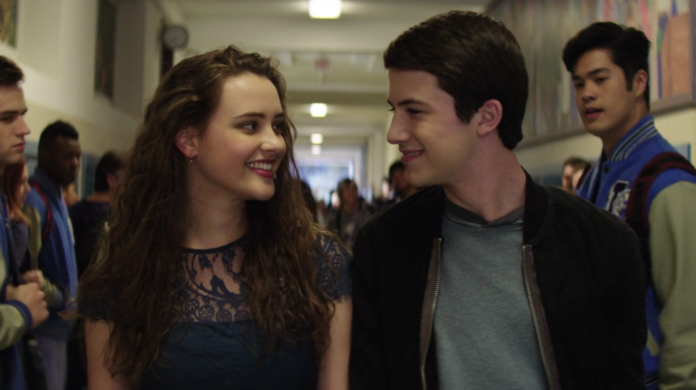
“Thirteen Reasons Why” is not a feel-good series. The Netflix original, which was released on March 31 and has almost instantaneously developed a cult following, will not leave you feeling happy or content, and that is part of what makes it so important.
The series is based on Jay Asher’s 2007 novel of the same name and follows main character Clay Jensen, played by Dylan Minnette, as he listens to the tape-recorded suicide note of 17-year-old Hannah Baker, played by Katherine Langford. The show is broken up into 13 episodes that follow the events of Hannah’s 13 tapes, each of which tell the stories of 13 interactions that led to her eventual suicide.
The show is an excellently produced, stark look at how our words and actions can drastically impact the lives of others. It speaks to the necessity of community and friendship in hard times, as well as the reality that incidents that appear isolated or inconsequential can work in conjunction to absolutely break a person. More than that, though, it holds up a very blatant mirror to some of the most egregious and painful acts that can be committed in our society, acts that we speak about in hushed voices as though they are something to be ashamed of, acts such as rape and suicide.
I applaud Netflix for tackling “13 Reasons Why,” and I applaud creator Brian Yorkey for refusing to shy away from the toughest subjects. That said, this show is very graphic. Several of the episodes, particularly toward the end of the series, feature trigger warnings for graphic depictions of sexual assault, abuse and suicide. It leaves little to the imagination, which might make this series unsuitable for the audience that needs it most, depending on how parents feel about sex, blood, alcohol and drug abuse. For me, though, censoring or softening acts such as rape and suicide would have been a disrespect to the subject matter: We need to be taken aback by the events portrayed in “13 Reasons Why” because these events are horrific. Rape is horrific. Bullying is horrific. Suicide is horrific. And the repercussions are enough to take anyone to their knees, as this show so poignantly portrays.
Yorkey stuck relatively close to the book’s original plotline, something I, a self-proclaimed bibliophile who has read the book a handful of times in the past four years, appreciated. The main points and scenes remained the same, though Yorkey took significant liberty in expanding the background plot lines, building on sideline characters whose voices and perspectives were relatively absent in the book. Overall, the changes were wonderful and added dimension to many of the secondary characters and a subsequent weight to their actions.
The biggest change, though, and the one I liked least, was Yorkey’s decision to draw the plot out over a series of days (weeks? It’s difficult to tell). In the book, when Clay receives the tapes, he listens to them all in one night, though Netflix’s version features an extremely hesitant main character who isn’t sure he fully wants to discover the reasons his love interest committed suicide—or how he factors in. Though I understand this choice from a cinematic perspective, it feels a bit improbable amid an unflinchingly realistic plotline. Any normal teen would have binge-listened to the 13 tapes in a single night, just as Clay did in the book and just as many of us have done with this series.
That aside, the cinematography in “13 Reasons Why” is fantastic. The producer experimented with camera angles, image layering and transitions that not only make it visually appealing, but also gives the show the same air of mystery, intrigue and suspense that was so prevalent in the book. In addition, the subtle camera differences between the scenes set in the present and the past helped make the constant timeline jumps easy to follow.
Overall, “13 Reasons Why” is, one of the most important shows on Netflix. It’s beautifully executed in a way that serves to highlight its message: that how we treat others matters, that we never know what’s going on in a person’s life and that our actions, be they minute or truly egregious, have an impact far wider than what we can ever truly anticipate. In a homage to our society, “13 Reasons Why” refuses to allow any character, protagonist or villain, to be one—dimensional, offers an unflinching look at the immense sorrow that inevitably follows suicide and asks viewers to sincerely examine how they interact with the people around them. It serves as a much-needed reminder that people matter and that how we treat others can be the difference between life and death, between someone choosing to slit their wrists or to try another day.





